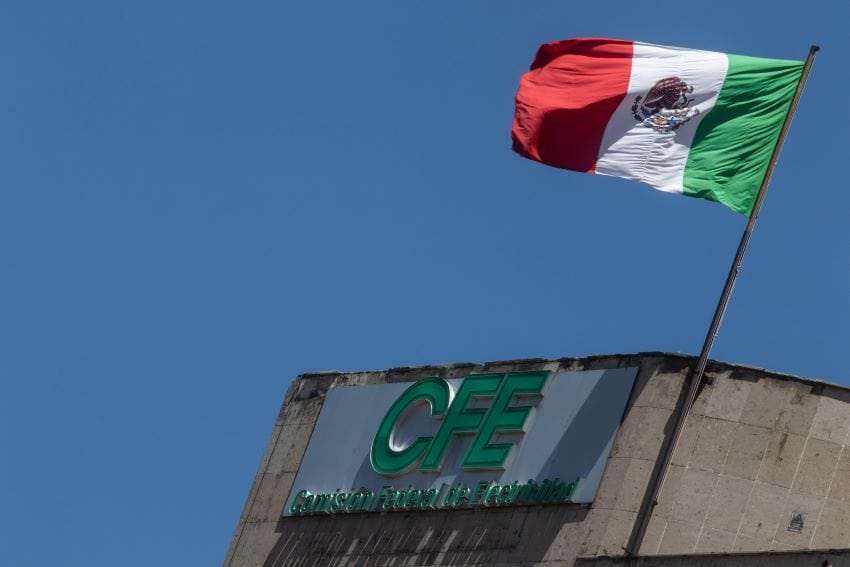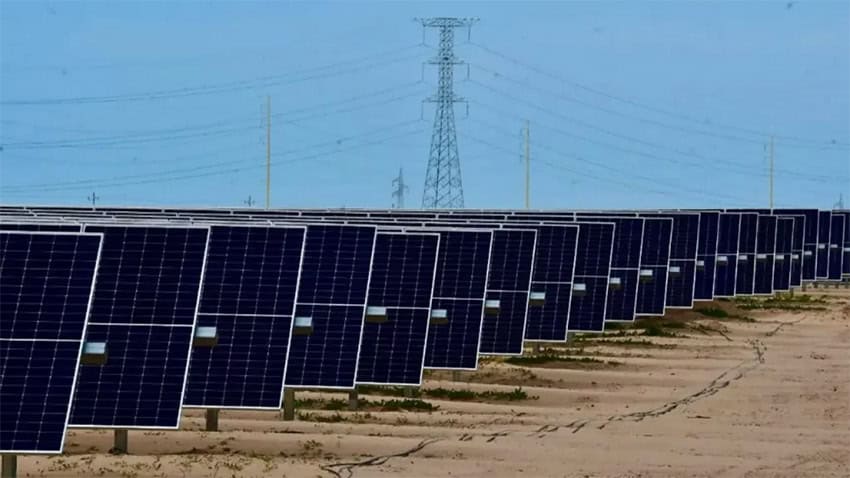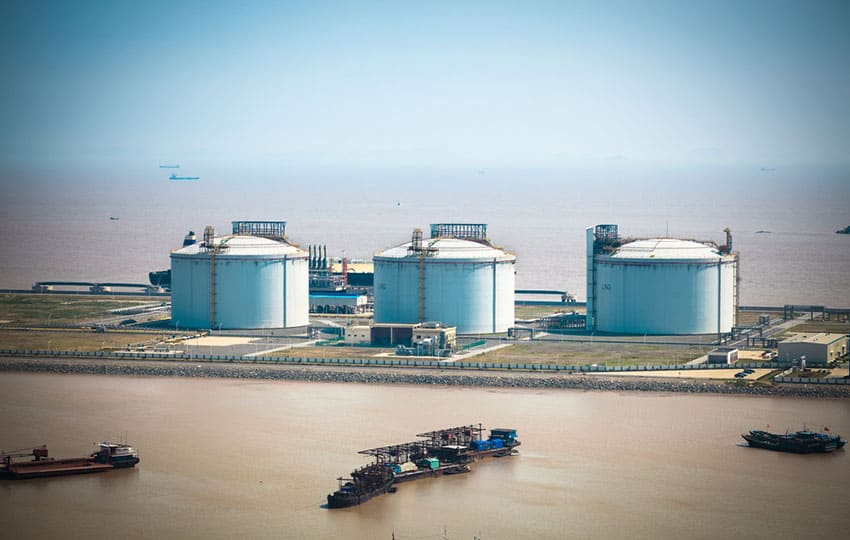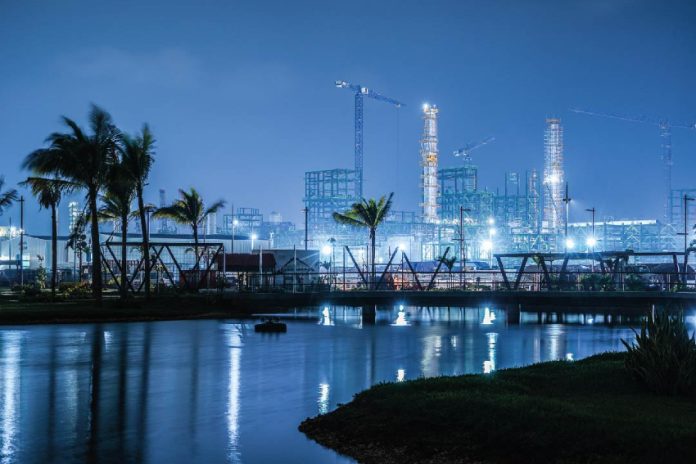Setting Mexico on a path toward a sustainable and reliable energy future is a critical challenge for President Claudia Sheinbaum and her administration.
A lot has happened during her first eight months in office, but there is no doubt that much more needs to be done as demand for energy in Mexico — including from the vast industrial sector — continues to grow.
Last October, during the president’s very first month in office, the Mexican Congress approved an energy reform that stipulates that the state-owned Federal Electricity Commission has the constitutional right to generate and supply the majority (54%) of electricity in Mexico.
In addition to firmly supporting the state’s primacy in Mexico’s electricity sector, Sheinbaum — a climate scientist — is committed to advancing the use of renewable energy sources, a key differentiation between her and her political mentor and predecessor Andrés Manuel López Obrador, a champion of fossil fuels.
Balancing her commitment to the clean energy transition while ensuring Mexico’s growing demand for electricity is met will be no easy task for Sheinbaum, who is also intent on achieving energy sovereignty, including self-sufficiency for gasoline, even as the output of the heavily-indebted state oil company Pemex continues to fall.
Yes, the energy challenges for Mexico’s first female president and her administration, as well as the energy sector itself, are indeed many.

One institution that is highly cognizant of these challenges is the San Diego-based non-profit public policy center Institute of the Americas (IOA), which has run an “Energy & Sustainability program” for over 30 years and has long maintained a close interest in energy issues in Mexico.
Mexico News Daily recently spoke about Mexico’s energy challenges and the country’s energy landscape more broadly with IOA President and CEO Richard Kiy, the public policy center’s vice president for energy and sustainability, Jeremy Martin, and non-resident fellow and energy expert Leonardo Beltrán.
In a subsequent email to Mexico News Daily, the University of California-based IOA set out what it see as “three very important challenges” for the energy sector in Mexico, while acknowledging that the full list of challenges is “extensive.”
Mexico needs to provide additional ‘clarity’ to private sector energy companies
While the aforementioned energy sector reform limits the participation of private and foreign companies in Mexico’s electricity sector, it does not preclude them from playing an important role in ensuring that Mexico can meet demand for power and make the transition to greater use of clean energy sources.
The IOA told Mexico News Daily that “the need for clarity as to the private sector’s involvement in Mexico’s energy sector” is paramount.
While secondary laws supporting the energy reform and setting out the rules for private sector investment passed Congress earlier this year, the IOA believes additional clarity is required.

“The law has set forth very clearly the primacy of the state and state-owned enterprises in the energy sector, but at the same time has not ascribed exclusivity. Indeed, there appears to be areas for engagement by the private sector and those demand further clarity in the regulations and a collaborative approach to the government’s approach to meeting its energy goals,” it said.
Mexico needs to ‘reinvigorate’ investment in clean energy
The IOA said that “a related challenge is reinvigorating investment in renewable and clean energy.”
“Mexico has some of the world’s most important wind and solar resources, as well as geothermal and hydro, but they have not been sufficiently developed,” the policy center said.
The federal government presented more than 50 new electricity projects earlier this year, including wind and solar ones, and the massive Puerto Peñasco solar park in Sonora is already partially operational.
During the president campaign last year, Sheinbaum pledged to invest more than US $13 billion in a renewables-focused energy plan if she became president.
Indeed, there is plenty of renewable energy potential for Mexico to tap into — as IOA indicated, and the federal government recognizes. The private sector can also play a key role in the energy transition in Mexico, as the federal government has acknowledged, as Latin America’s second-largest economy seeks to do its bit to help mitigate climate change.

The IOA noted that “the Sheinbaum administration has set a goal for clean energy generation of 45% by 2030.”
“How to reach that goal under the current legal and regulatory framework demands more clarity and explanation from the administration on how private sector can help materialize that vision,” it said.
Another challenge to address: Dependence on US for natural gas
The IOA told Mexico News Daily that “the geopolitics and broader context for U.S.-Mexico relations is particularly important as it relates to energy flows and the massive dependency Mexico has on imported natural gas from the United States.”
During López Obrador’s six-year term as president, Mexico’s imports of natural gas from the United States increased to hit a record high in the first nine months of 2024. The increased reliance on U.S. natural gas imports coincided with a decline in domestic production.
“By some estimates,” the IOA said, “over 70% of the natural gas in Mexico comes from the U.S.”
“During the polar vortex of 2021, when major cuts to gas pipeline exports from Texas were seen, the dependency was painfully obvious,” the public policy center added.
Natural gas shortage triggers major power outage; nearly 5 million affected
Northern Mexico endured major power outages due to the interruption in the natural gas supply in early 2021, allowing López Obrador “to use the days-long supply shock to illustrate the perils of over-reliance on a foreign supplier and provide it as proof that Mexico needed to be self-sufficient in energy,” as the Financial Times reported at the time.
The IOA highlighted a report by The New York Times last month that stated that “Mr. Trump’s return to power is now causing many in Mexico to rethink this arrangement [of natural gas dependency], especially as he makes claims on the territory of other countries in the Americas like Canada and Panama.”
The Times’ report also said that “natural gas has eclipsed oil as the country’s largest single fuel source, and is used to produce 60 percent of Mexico’s electricity.”
“An interruption of the flow of gas to Mexico would be beyond chaotic,” W. Schreiner Parker, managing director for Latin America at research firm Rystad Energy, told the Times.
“It’s truly one of the unspoken reasons why Sheinbaum has been so accommodating to Trump,” he said.
One way in which Sheinbaum is seeking to safeguard against any future gas flow interruptions is by increasing storage capacity in Mexico.

“The government of Mexico is expediting negotiations with private companies to double the capacity for the strategic storage of natural gas … due to fear that United States President Donald Trump could use the country’s strong dependence on the fuel as a means to pressure [Mexico] in trade negotiations,” Agence France-Presse reported earlier this year citing “three sources with knowledge of the matter.”
While increasing storage is viable, reducing the reliance on U.S. natural gas will be no easy feat given that Mexican production has been declining and Mexico’s demand for electricity is set to continue to grow.
‘Sufficient, affordable and sustainable energy supplies’ crucial to attracting new investment
To discuss these energy challenges and other Mexican energy sector issues, the IOA is holding an event focused on electricity and natural gas in Mexico at the Hotel Hyatt Regency in Mexico City next Thursday June 5. Energy Minister Luz Elena González is among the scheduled speakers.
The IOA said that the staging of its event is timely as “the changes in the energy sector are very fresh and require deeper levels of understanding.”
“It is a key moment for implementation and consolidating the final legal rules and norms,” the public policy center said.
The IOA also noted that the energy sector will play a key role in helping the government reach the goals it has set out in its ambitious Plan México economic initiative, among them an aim to significantly increase electricity generation by 2030.
“Further, there’s been a great deal of attention and focus on nearshoring and how Mexico is positioned to capture important manufacturing and industrialization investments. But none of that is possible without sufficient, affordable and sustainable energy supplies,” it said.
More information about the upcoming IOA “roundtable” in Mexico City — which members of the public can register to attend — is available on the event website.
Mexico News Daily
